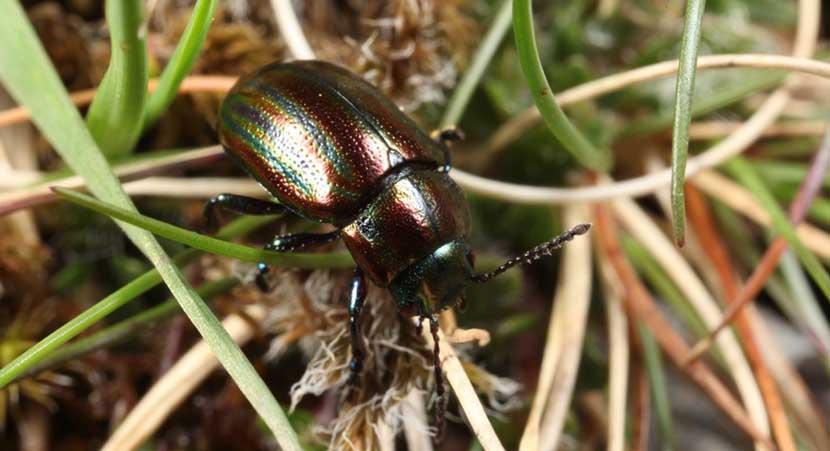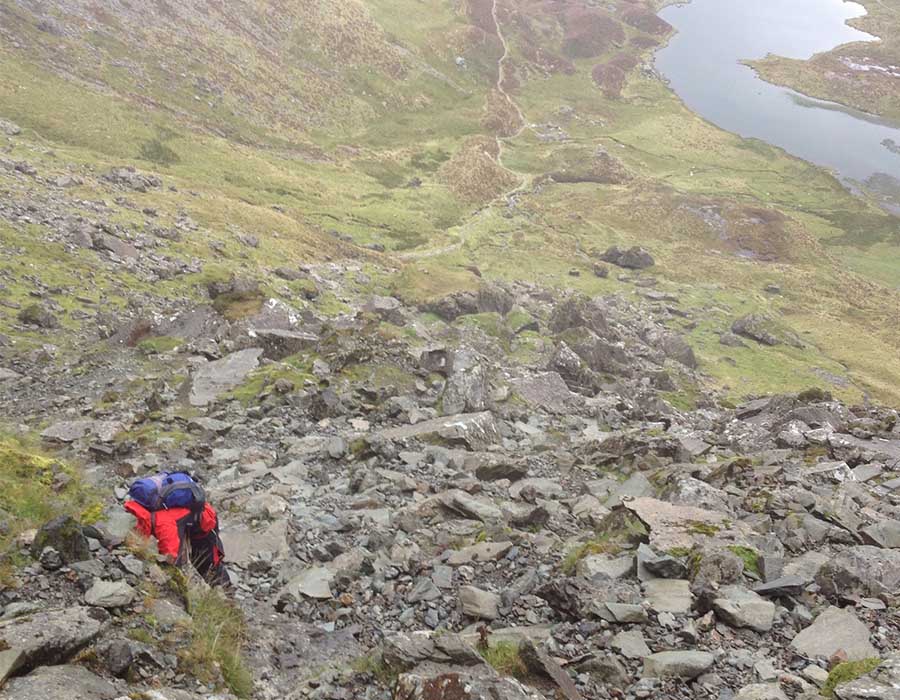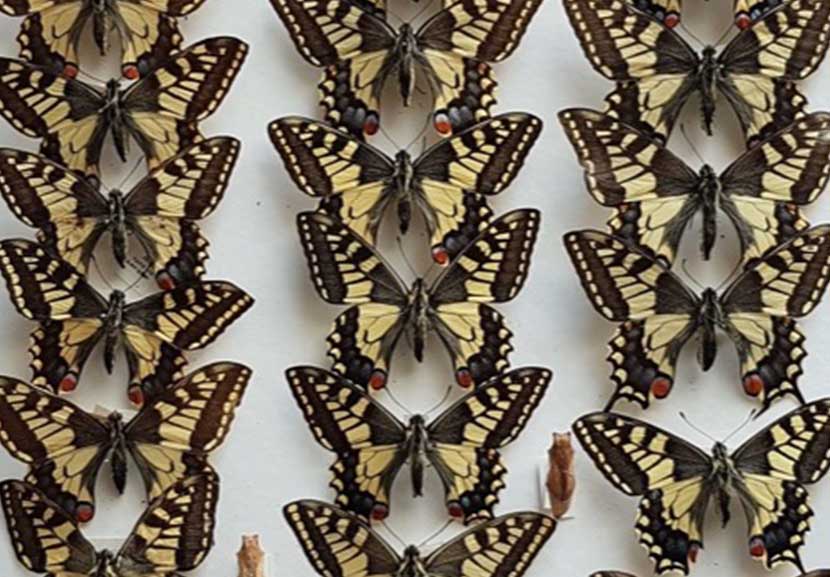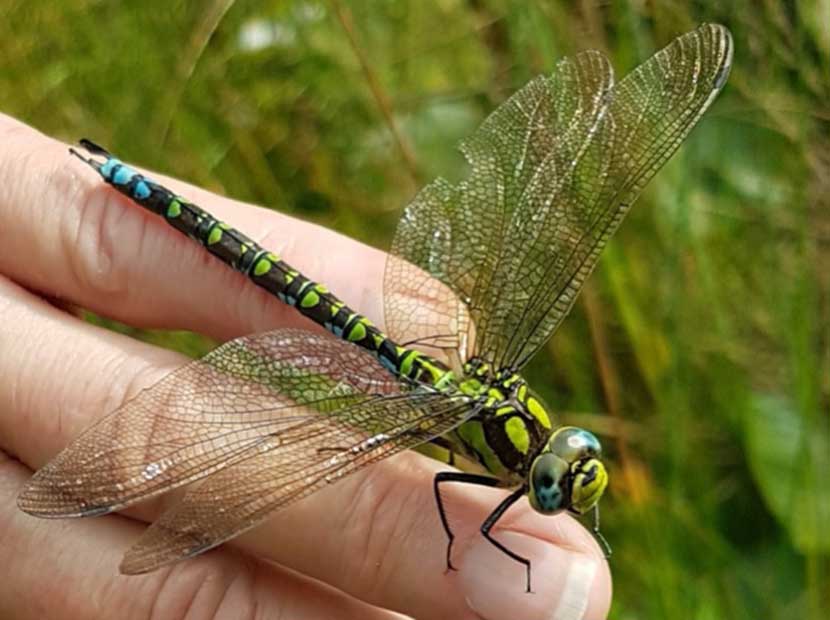Global Warnings: The UK's most iconic insects under threat

Insects are an extremely diverse and important group of animals, providing essential ecosystem services including the pollination of trees and flowering plants, nutrient recycling, and feeding animals higher up the food chain. They are also intrinsically beautiful and fascinating.
As well as raising temperatures, global warming is modifying habitats and altering weather patterns. In the short term this can have some beneficial effects like allowing certain species to move north; but it will inevitably lead to species extinctions if left unchecked. Particularly those species with specialised lifestyles. Here we examine the effects of climate change on some of the UKs most iconic and rarest insects.
The Snowdon Leaf Beetle Chrysolina cerealis
This attractive, iridescent beetle (see picture above courtesy of Richard Gallon), feeds on Wild Thyme. It is cold-adapted and in the UK it has only been found at a few places high on Mount Snowdon in North Wales. It is legally protected from human disturbance and collecting, but this does not protect it against climate change...

A few years ago, I joined colleagues from World Museum, Natural Resources Wales, and Cofnod, to search for the beetle after a gap in recording. Spending many hours searching on our hands and knees in the mist and rain, which so often occurs in this rugged and beautiful part of the country, to try to assess the beetle's status. We had to search very hard to find any at all, and only found multiple adults on a single occasion.
A previous study in the early 90’s had recorded much larger numbers, lower down the mountain. Suggesting the beetle had become less common and moved upwards in the 20 years between the two surveys. Possibly due to warmer temperatures and heavier rainfall which can drown and wash away adults, eggs, and larvae.
Swallowtail Butterfly Papilio machaon
One of our rarest and most attractive insects, the British swallowtail is a unique subspecies. Once widespread in the South and East of the UK, it has been threatened by historic over collecting, as well as habitat loss caused by draining fenlands for agriculture. It is now restricted to the Norfolk Broads where its remaining, low-lying habitat will be destroyed by the rising sea levels and saltwater inundation caused by melting ice sheets.

Although the Swallowtail is now protected, the entomological collections at World Museum, along with many others around the country, contain dozens of individuals amassed during previous centuries. Including many from historic sites like Wicken Fen, where the butterfly no longer occurs despite several reintroduction attempts. A sobering reminder that it is much better to conserve what we have, than to try to replace what has already gone.
Sandhill Rustic Luperina nickerli
As the name suggests, the British subspecies of this moth are found on the coast. Its caterpillars feed on the underground root stems of Couch Grass, Common Saltmarsh Grass, and Red Fescue.
Coastal habitats are threatened by rising sea levels, as well as inland developments and sea defences, which squeeze habitats like saltmarshes and sand dune systems, stopping their natural movement.
Dr. Ian Wallace, former curator and now honorary researcher with the museum, has studied the moth on the Gronant and Talacre dunes in Flintshire since 1993. He has observed that whilst infrequent storms can be beneficial in refreshing habitat, the more frequent and intense storms predicted for the future are likely to have a detrimental effect on populations.
Dr. Adrian Spalding has also studied the various UK populations in the hope of improving their conservation. He and Dr. Mark Young found that one particular Sandhill Rustic subspecies, (ssp. leechi), is found only on a small shingle beach in Cornwall. Leaving it particularly susceptible to extinction by adverse habitat factors such as storms and rising sea levels.

These often large and impressive predators are highly mobile, with some species able to reach speeds of 35 miles per hour. They thrive in warm temperatures, and several species seem to have benefitted from recent changes in our climate.
Six new species have colonised the UK in the last 25 years, and around 40% of our 46 species have spread North in the past few decades. This includes one of the largest species, the Emperor Dragonfly, which was formerly restricted to the Southern part of the UK but now found as far North as mid-Scotland.
Whilst species are expanding their ranges in the north, species in the far south are likely to suffer as warming temperatures and erratic rainfall threaten the pools their larvae develop in. This includes moorland and upland species like; the Common Hawker and the rare Scottish Northern Damselfly, which is already at its southern limit.

Insects are just one small group among hundreds of thousands of species being adversely impacted by the climate crisis. See below our stories highlighting the effect of Climate Change in line with the UN Climate Change Conference, Cop27.
